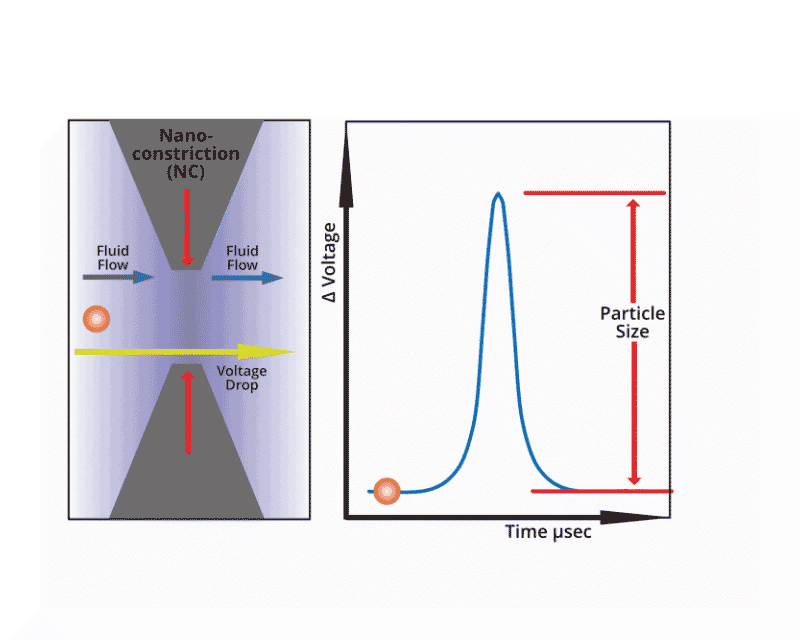

Spectradyne's nanoparticle analysis systems are based upon a long-time, proven technology, resistive pulse sensing (RPS). RPS uses electrical signal detection as its basis, which yields numerous advantages over the optically-based detection used in the majority of particle analyzers. Back to table of contents
In the late 1940's, Wallace Coulter was studying ways to do rapid screening for diseases by blood cell analysis. Prior to this, analysis of blood cells required laborious examination under a microscope. Coulter was interested in automating this process to make it widely available as a tool for rapid screening of large populations, and eventually received a grant from the Office of Naval Research which partially funded the research. Initially, he and his brother Joseph were looking at an approach using a light beam focused through a narrow capillary tube to detect and count the cells but found that the electrical contrast created by the cells produced a 10X higher signal than photoelectric signals [M. Don, "The Coulter Principle: Foundation of an Industry," JALA: Journal of the Association for Laboratory Automation 8(6), 72-81 (2003)].
In 1953 Coulter was awarded US Patent 2,656,508, "Means for counting particles suspended in a fluid". The method is widely known as the Coulter principle, in which a particle passing through a small pore will produce a change in the electrical resistance of the pore, proportional to the volume of the particle passing through. The Coulter principle is more generically referred to as resistive pulse sensing (RPS), as shown in the figure to the right). Unlike optically-based measurements, the signal measured is independent of the particle's material properties (including optical contrast) and shape. This is a key advantage of RPS.
Since the early 1960's, Coulter counters have been the gold standard for doing whole cell blood counts. Therefore, instruments based on RPS are using technology that has a proven track record, with literally millions of samples being run every week. However, up until recently, RPS devices were generally limited to 1 micron and larger diameter particles.
Attempts to scale Coulter principle instruments to smaller sizes have found limitations caused largely by thermal noise in very small apertures. While there have been some published reports dating back to 1970 on RPS devices for sub-micron particles [R.W. DeBlois and P.C. Bean, "Counting and sizing of submicron particles by the resistive pulse technique", Rev. Sci. Inst. 41(7), 909-916 (1970)], these have been largely limited to academic, "one-off" devices that were not commercialized.
However, technological advances in seemingly unrelated disciplines have created methods that overcome these size limitations. In particular, advances in semiconductor fabrication techniques have been applied to the burgeoning field of microfluidics, which have enabled commercialization of RPS instruments that can size and measure particle concentrations to particle diameters as small as 35 nm.
Spectradyne's RPS implementation is designated microfluidic resistive pulse sensing (MRPS), implementing the fundamental RPS implementation in a microfluidic cartridge that only requires 3 μL of sample for measurement. A description of this implementation was first published in 2011, and became the basis for the incorporation of Spectradyne in 2012, and the commercial introduction of the nCS1TM instrument in 2014.
Please continue to follow our blog as we share insights, technical details, and generally geek-out with you about nanoparticle science!
Email us for more information, or to discuss your particular application directly.

An animation of how microfluidic resistive pulse sensing (MRPS) works, with particles flowing through a nanoconstriction (left) and generating a time-dependent change in the electrical resistance of the nanochannel.

A microfluidic cartridge for resistive pulse sensing